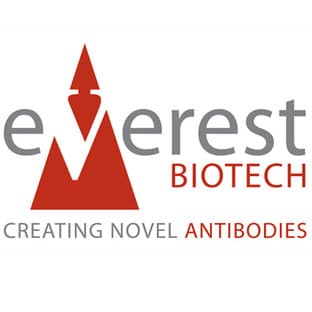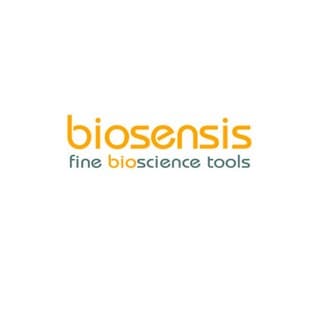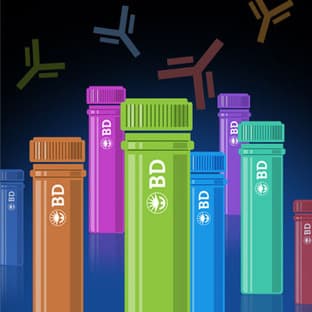
Supplier:
Boster ImmunoleaderCat no: PA1114
Polyclonal Anti-PTPN11/SHP-2
Prices direct from Boster Immunoleader
Quick response times
Exclusive Absave savings/discounts
SPECIFICATIONS
Price
200.00 USD
Catalog Number
PA1114
Size
100ug/vial
Applications
IHC, WB
Reactivities
Hum, Mouse, Rat
Form
Lyophilized
Format
Each vial contains 5mg BSA, 0.9mg NaCl, 0.2mg Na2HPO4, 0.05mg Thimerosal, 0.05mg NaN3.
Gene Id
PTPN11
References
1. Saxton, T. M.; Ciruna, B. G.; Holmyard, D.; Kulkarni, S.; Harpal, K.; Rossant, J.; Pawson, T. : The SH2 tyrosine phosphatase Shp2 is required for mammalian limb development. Nature Genet. 24: 420-423, 2000.
Swiss Prot
Q06124
Storage Temp
\"At -20 degree C for one year. After reconstitution, at 4 degree C for one month. It can also be aliquotted and stored frozen at -20 degree C for a longer time.\nAvoid repeated freezing and thawing. \n\"\n
Additional Info
A synthetic peptide corresponding to a sequence at the C-terminal of human SHP-2, identical to the related rat and mouse sequences.
Scientific Background
The tyrosine phosphatase Shp2 is recruited into tyrosine-kinase signalling pathways through binding of its two amino-terminal SH2 domains to specific phosphotyrosine motifs, concurrent with its re-localization and stimulation of phosphatase activity. Shp2 can potentiate signalling through the MAP-kinase pathway and is required during early mouse development for gastrulation. Shp2 is specifically required in mesenchyme cells of the progress zone (PZ), directly beneath the distal ectoderm of the limb bud. Rather than integrating proliferative signals, Shp2 probably exerts its effects on limb development by influencing cell shape, movement or adhesion. Furthermore, the branchial arches, which also use Fgfs during bud outgrowth, similarly require Shp2. Thus, Shp2 regulates phosphotyrosine-signalling events during the complex ectodermal-mesenchymal interactions that regulate mammalian budding morphogenesis.
More from Boster Immunoleader
Applications
WB
Reactivities
Hum
Applications
ELISA, WB
Reactivities
Hum
Applications
ELISA, IHC, WB
Reactivities
Hum
Applications
ELISA, WB
Reactivities
Mouse
Applications
ELISA, IHC, WB
Reactivities
Rat
Applications
BNI, ELISA, IHC, IP, WB
Reactivities
Mouse
Conjugates
Unconj, Agarose, AP, Biotin, Gold, HRP, BE, GE, YE, OE, RE, FRE, NIR, ONFC
Applications
BNI, ELISA, IHC, IP, WB
Reactivities
Rat
Latest promotions
Buy any polyclonal or monoclonal antibody from our extensive range of pre-made antibodies and for a limited time only receive a $50 discount!(T&C apply:...
New brilliant antibodies, and new lower prices!For flow cytometry reagents in general, \"bright is better.\" The violet-excitable BD Horizon™ BV421 and...
10% Discount on 2 Rabbit Polyclonal Antibody Service. With over 20 years experience, SDIX has developed into the premier US custom antibody producer,...
For the past decade scientists have extensively used ATS secondary toxin conjugates to make their own targeted toxins for in vitro use.The ability to combine...
We're so sure that you'll prefer Cayman Assay kits over your present brand that we're willing to give you a free assay kit to prove it!
Did your supplier increase the price of Fetal Bovine Serum? Did they substitute the US Origin with USDA? Well say no more! Innovative Research is still...
Bulk Cytokines with Custom Vialing.20 - 50% off cytokines, growth factors, chemokines and more...For a limited time Cell Sciences is offering substantial...
Are you planning to have a customised antibody made for your research?Since 2000, Everest has been producing a catalog containing thousands of affinity...
Top suppliers
Agrisera AB
11 products
Biotrend
Biosensis
969 products
ABBIOTEC
3011 products
SDIX
1 products
Spring Bioscience
2291 products
Cell Signaling Technology
4976 products
Rockland Immunochemicals, Inc.
7592 products
Boster Immunoleader
1533 products
OriGene Technologies Inc.
5281 products
Maine Biotechnology Services
227 products
BD (Becton, Dickinson and Company)
1 products
ABNOVA CORPORATION
Randox Life Sciences
1502 products















